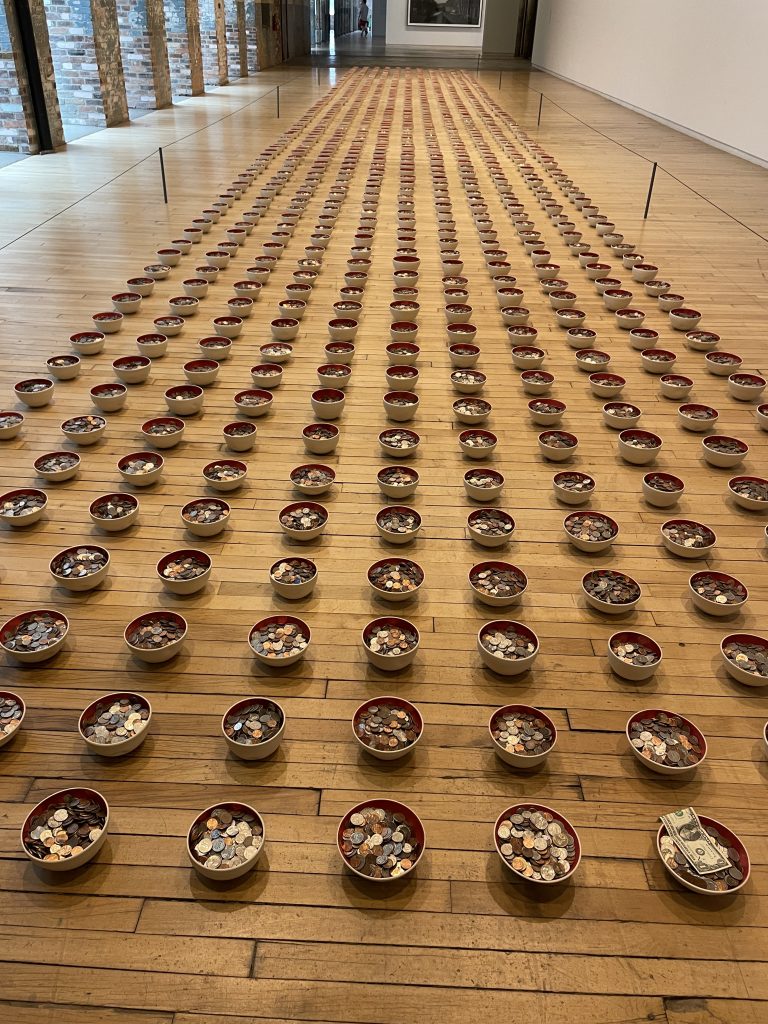In spite of my struggles with very modern art, we found ourselves at the Massachusetts Museum of Contemporary Art (MASS MoCA) on a very rainy day, which made popping into the outer buildings and exhibits a bit wet.
Per their website, this museum “embraces all forms of art: music, sculpture, dance, film, painting, photography, theater, and new, boundary-crossing works of art that defy easy classification.”
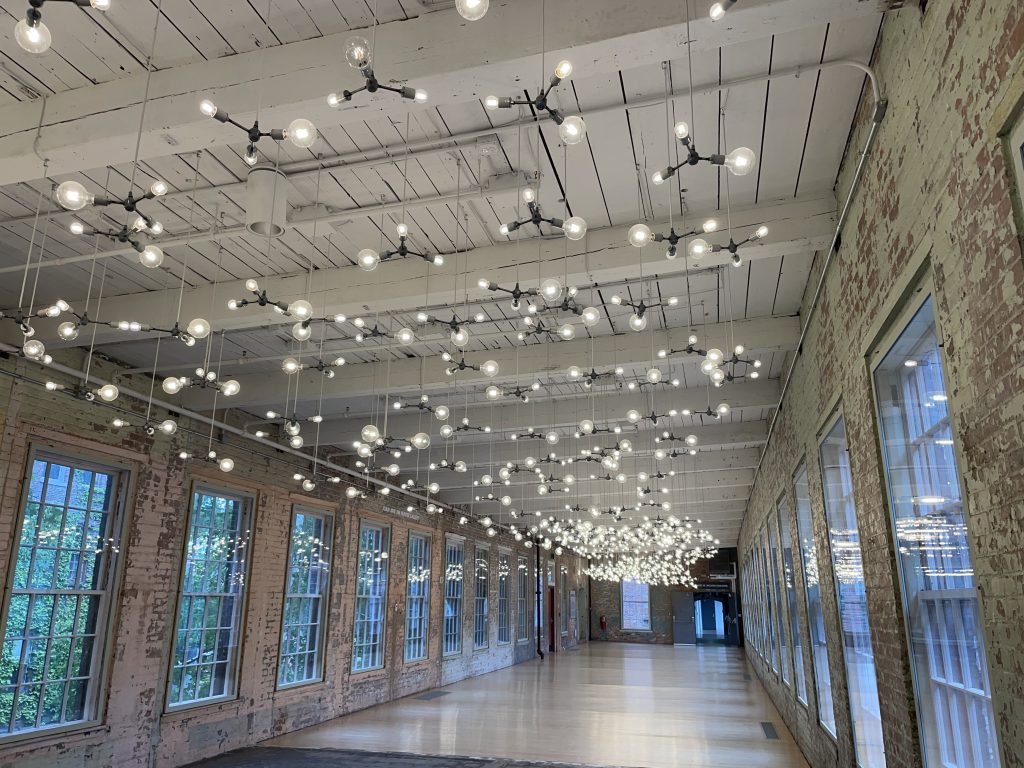
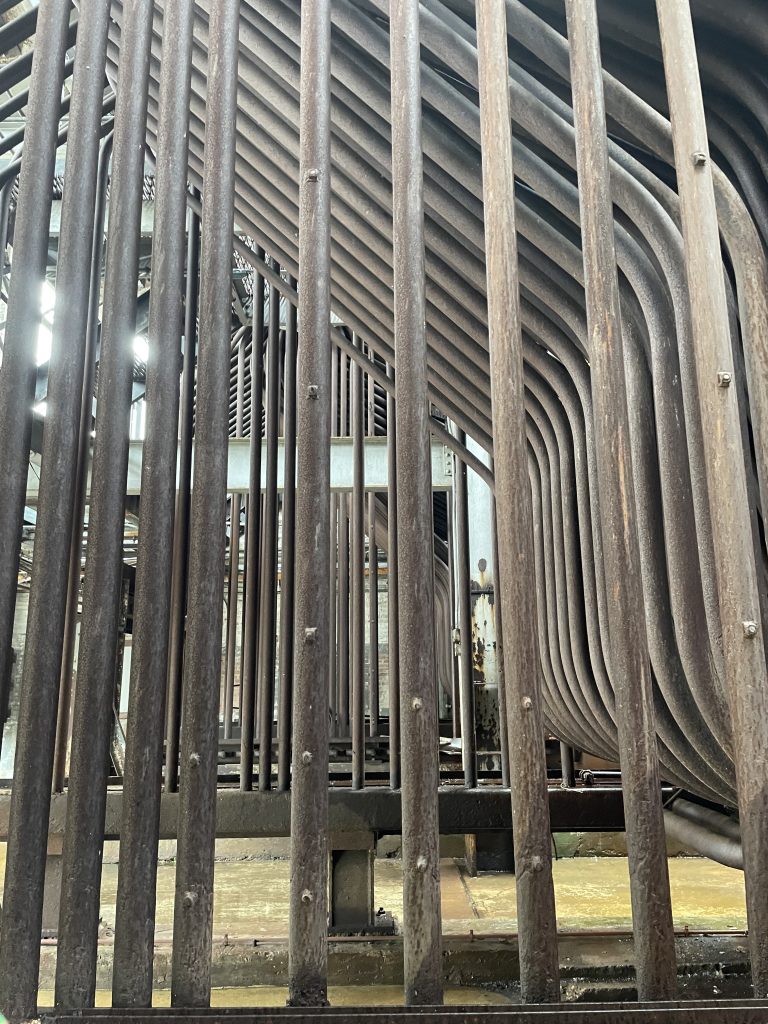
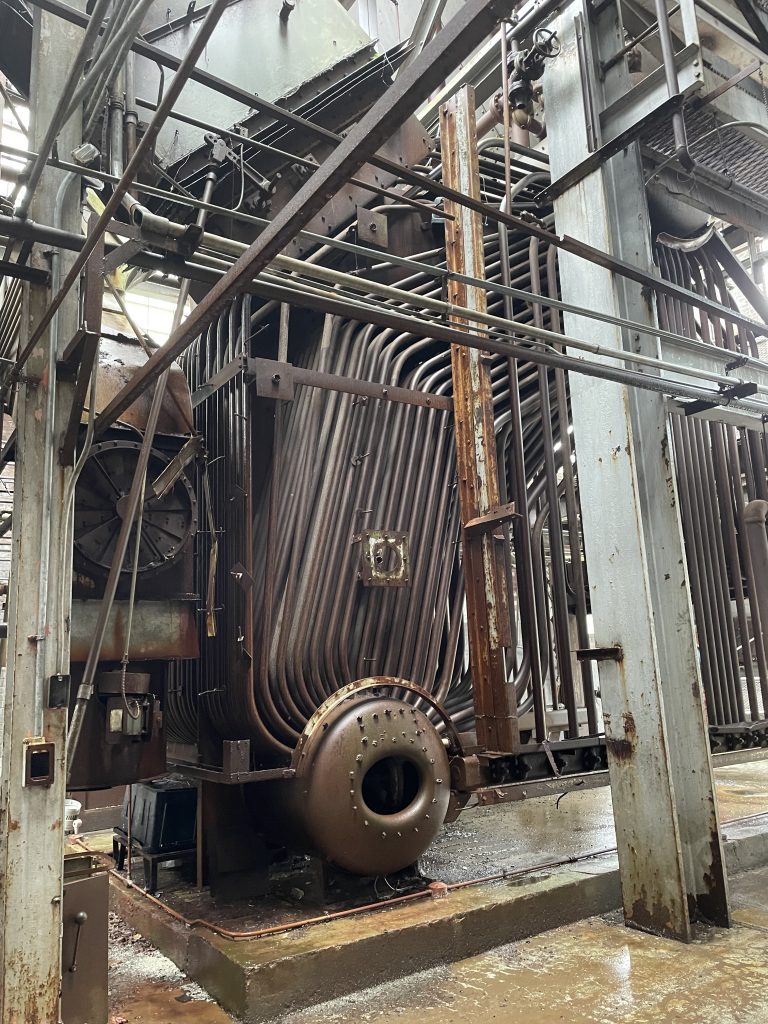
Mass MoCA is housed in the former Arnold Print Works factory building complex in North Adams, Mass. With 130,000 square feet of exhibit space, it is one of the largest centers of its kind in the United States.
It opened in 1999 and a wonderful example of building rehabilitation and reuse in the U.S. The movie Museum Town is a 75-minute documentary telling the story of the transformation of an industrial-era complex into a modern art museum.
Doug was most interested in seeing the Gunnar Schonbeck “No Experience Required” permanent exhibit, which includes hundreds of handmade instruments of surprising sizes and materials. The collection was luckily adopted by Mass MOCA after Schonbeck’s death, so his legacy has a permanent home.
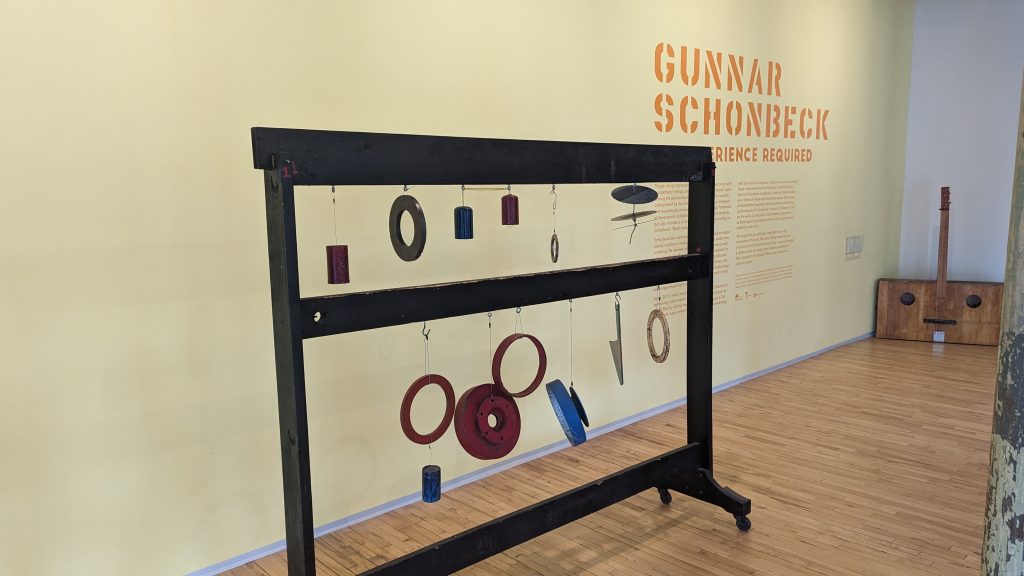
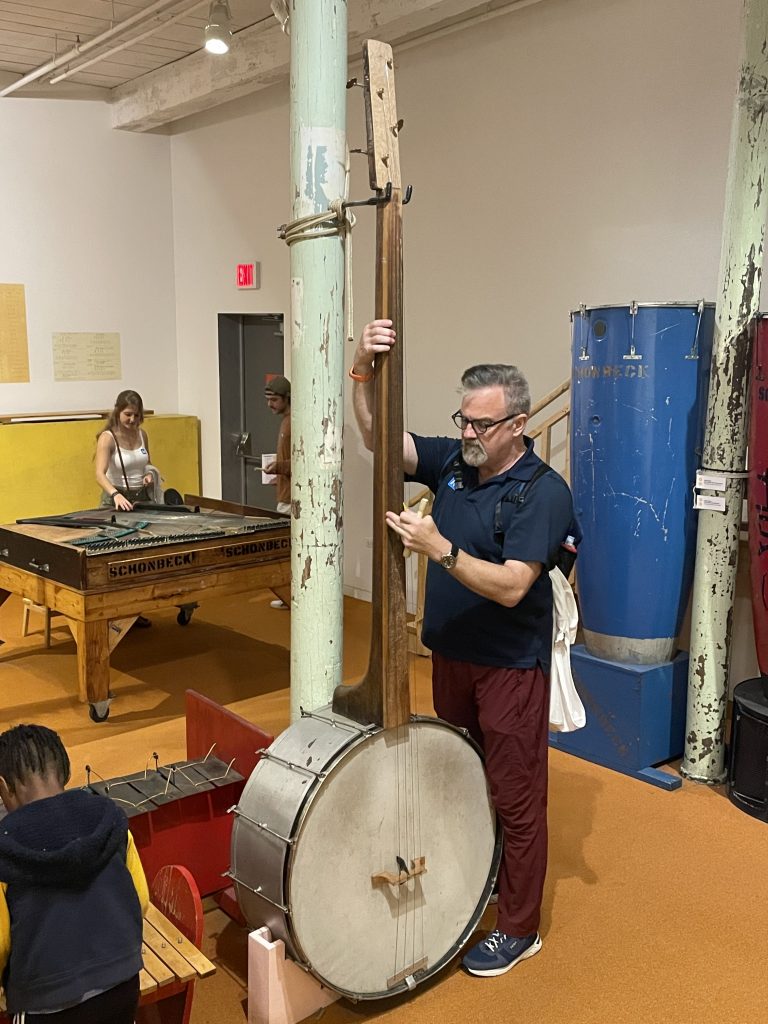
Schonbeck taught music at Bennington College when Doug attended, and he recalled seeing many of the instruments on display in Schonbeck’s studio on the top floor of the student commons building on campus. On Doug’s freshman orientation day, Gunnar played the nine-foot banjo (above right) as part of a Dixieland jazz quintet during the festivities.
Most fun and unusual, you are encouraged to play, picking up a gong and pick as you enter the space. You can watch a Youtube video about the exhibit here.
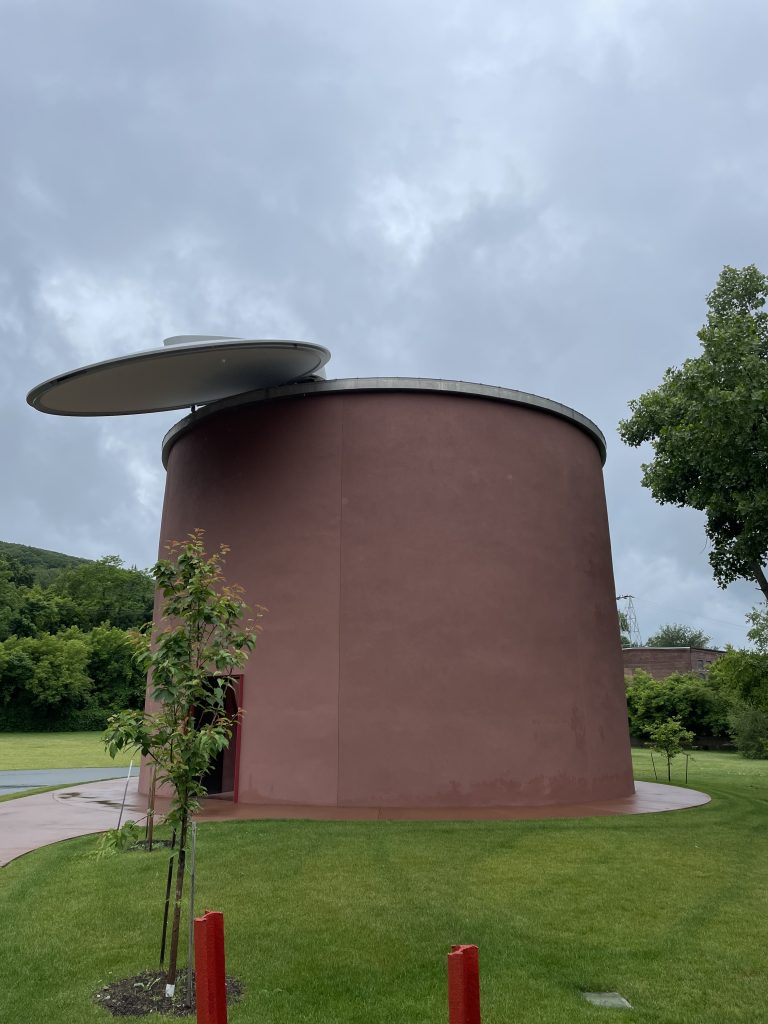
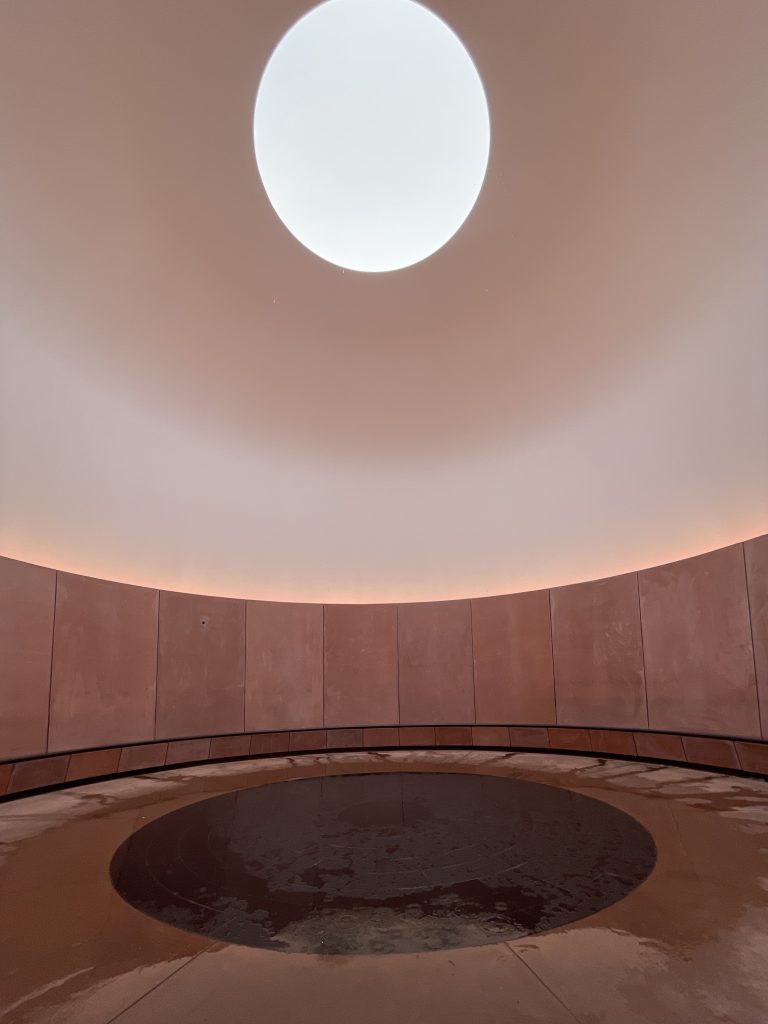
I do find the use of light fascinating, so I was excited to see that there were several James Turrell items (including the cover photo Dissolve and C.A.V.U. at left).
We were also able to score a place for the “Perfectly Clear (Ganzfield)” installation, in which eight people enter a very large white room. Then, the color of the lights morph, interspersed with periodic bursts of strobing lights, which affects the rods and cones in your eyes, and thus changes your perception of space and color.
A white wall visible through the entry way never appeared to be white at all — it mostly looked very blue or green whenever we glanced at it during the 10-15 minute experience, displaying the complementary (opposite) color of whatever color was currently saturating the installation room.
Inside the room, I could not sense the side walls at all and actually reached out at several times only to find the wall was much closer than I thought. All in all, the sensation was that we were adrift on a very colorful iceberg (which is what the German word “Ganzfield” refers to).
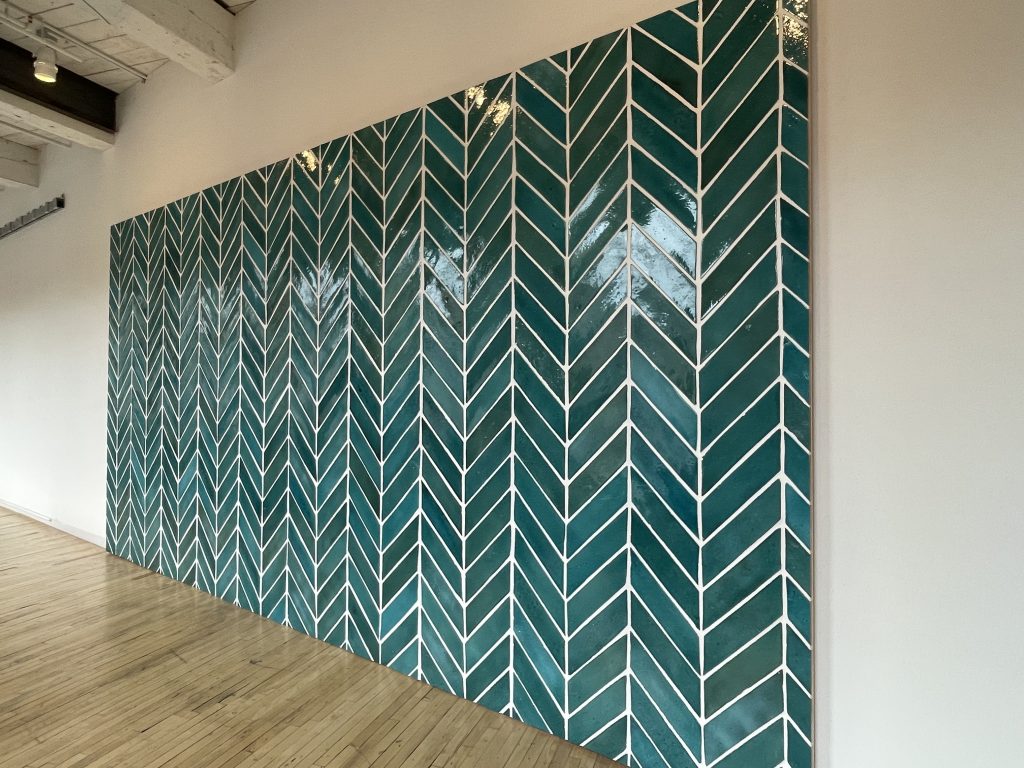
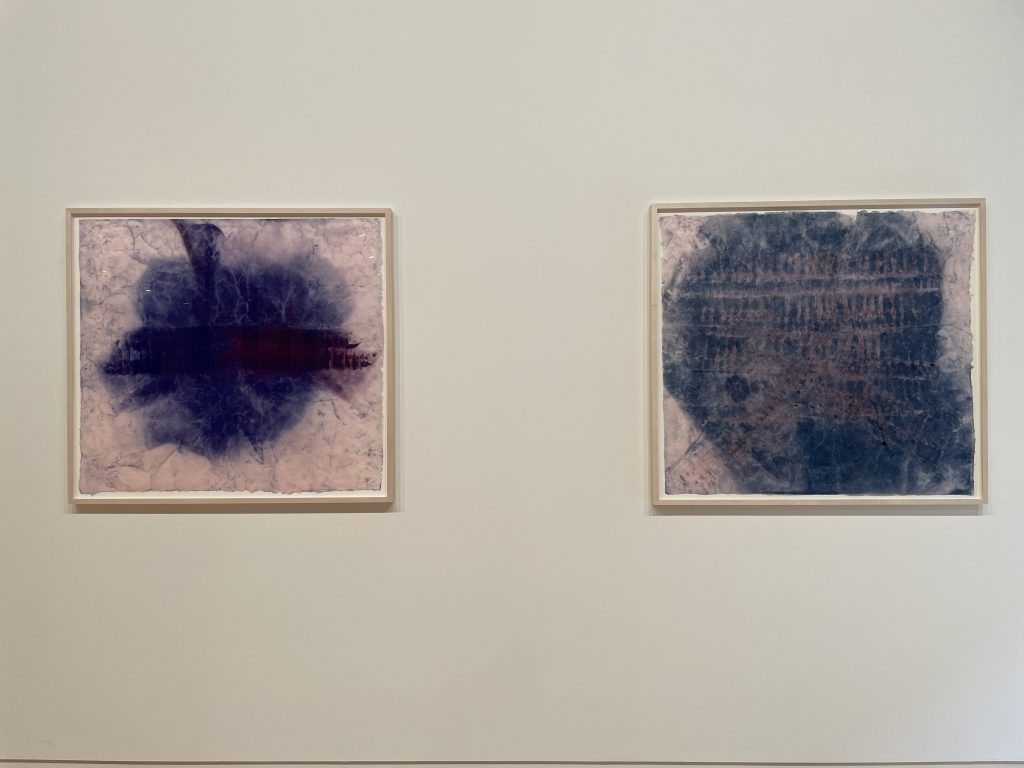
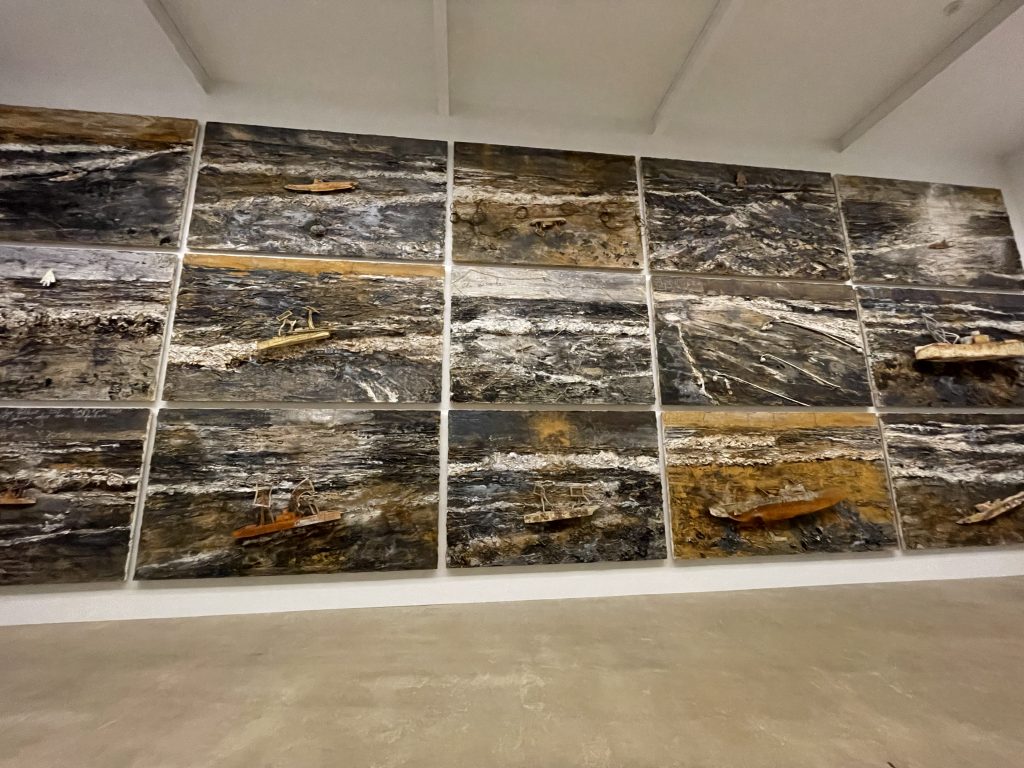
At right is Kelli Rae Adams’ Forever in Your Debt, an interactive exhibit. Adams “has crafted hundreds of wheel-thrown vessels, sized to collectively hold the average individual student debt —$37,000—in the form of coins. Each unique bowl holds approximately a pint of mixed change, worth about $40; this is also the value she assigns to the labor embodied in each vessel. Adams offers viewers the opportunity to engage directly with the work—and the issue—by inviting them to fill a bowl with their own collected coins. In exchange, the artist will send one of the bowls to each participant at the conclusion of the years-long project. As the vessels are filled, the red interiors—a reference to “ being in the red” or owing more money than is earned—are gradually obscured by the coins, reflecting the incremental erasure of student loan debt.”
